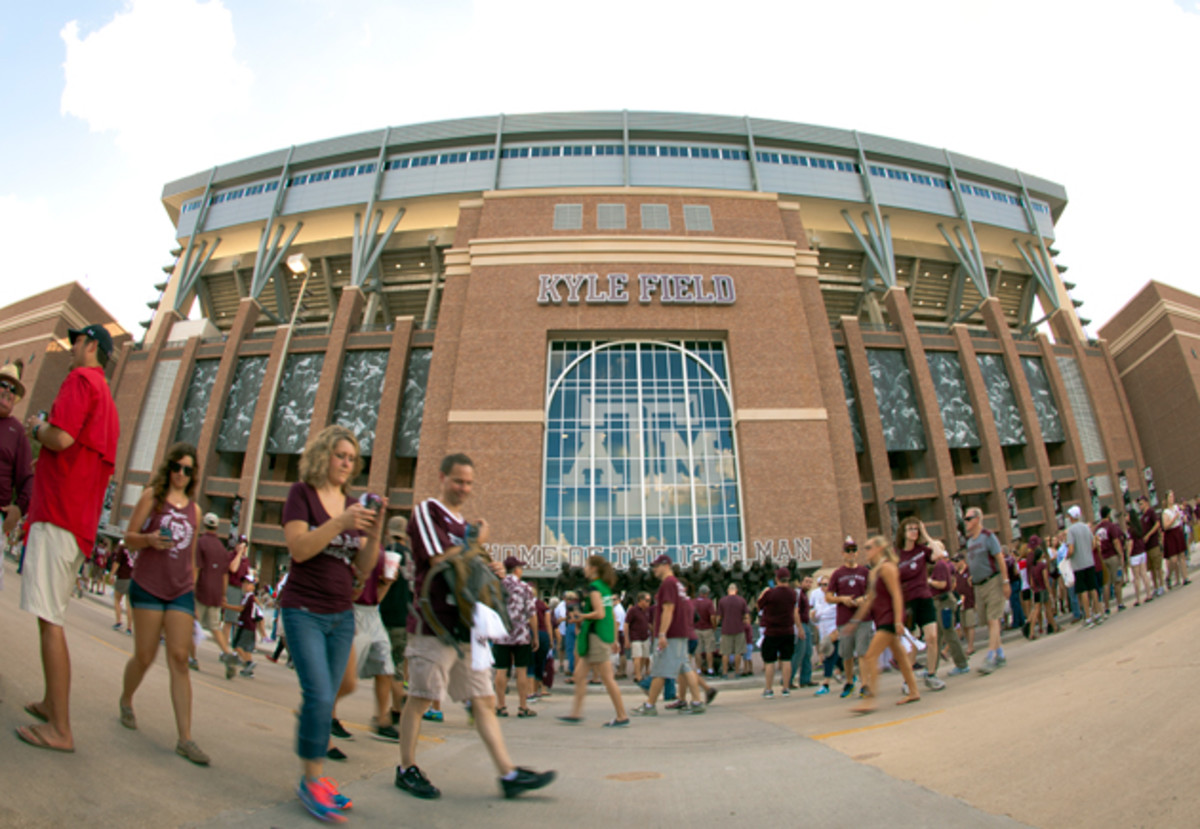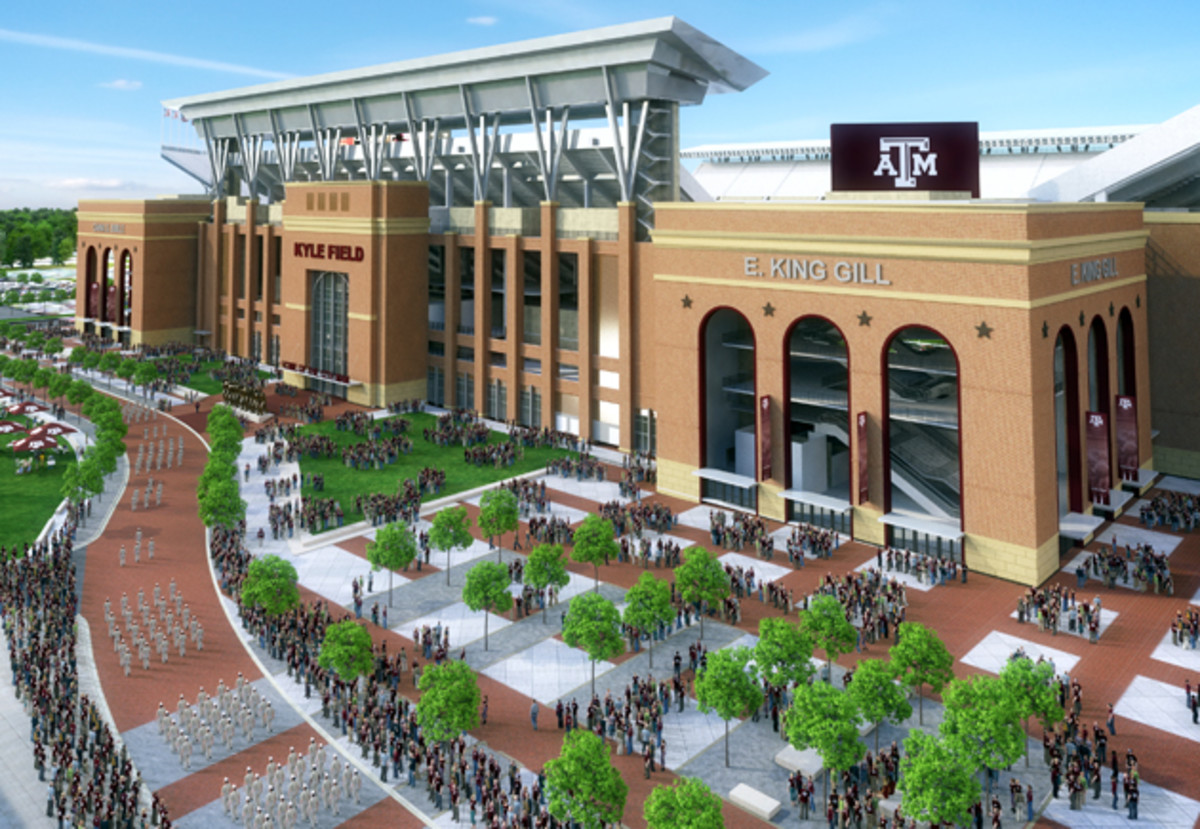Texas A&M's redone Kyle Field is now largest in SEC, full of new amenities

Some Texas A&M officials felt 92,000 was enough. Not for Chancellor John Sharp. This Aggie knew that he needed to unify Kyle Field by making it symmetrical. And doing that bumped capacity to 102,512, the largest football stadium in the SEC and fourth largest in the nation.
“When this thing started it was the most nervous time in my life,” Sharp tells SI.com. “Folks didn’t think we could fill up a 102,000-seat stadium. We sold all 102,000 tickets in 18 minutes.”
And those 102,000 folks will filter into the completely overhauled Kyle Field in College Station, Texas, for the first time on Saturday, Sept. 12, when the Aggies host Ball State.
Sharp says the renovation’s most important piece was making the building symmetrical, building a true bowl. For Craig Kaufman, the Populous architect on the project, just bringing the stadium up to standards was a major step. But they didn’t stop at that.
“There were parts that date back to 1927,” Kaufman tells SI.com. “Over decades there have been pieces here and there added and changed and modified. It was a patchwork of design and wasn’t really tied at all as a unified station.”

The design was lacking. The functionality was less than stellar. And the amenities were abysmal (the new venue increased women’s restroom fixtures 300%).In short, Kyle Field wasn’t attractive and wasn’t functional. The $485 million, 18-month project changed that.
Nearly 90 percent of the stadium stands new, Kaufman says. The 2009-built north end zone building received a redone exterior and seating bowl in order to connect it to the rest of the stadium. On the east side, which was done prior to last season, the existing three-deck seating welcomed a new lower deck, leaving the upper two in place. All the concourses were redone on the east side, changing the entire feel of the side. In the south, where a few bleachers blocked an otherwise wide-open end, Populous filled in the design, making Kyle Field a true symmetrical bowl. And on the west side, the final phase, crews simply imploded what was there and built something totally new.
Texas A&M's Myles Garrett driven by the examples of his two older siblings
Having more time to plan for the west side—implosion followed the end of last season—allowed Texas A&M to focus there on new fan experiences and seating options. The most impressive space, Kaufman says, comes at the ground floor, where, at longer than a football field and three stories tall, comes a new Hall of Fame space.The school plans to use the space—the largest open space the university has—throughout the year for everything from wedding banquets to large lectures.
Flowing up from the Hall of Fame space comes the majority of premium areas, including 12 founders’ suites, field boxes, an alumni section, legacy suites and more. “By starting from scratch we didn’t have to live with the structure and bones already there,” Kaufman says.
And, oh, don’t forget that Kyle Field also now boasts the second largest video screen in college football.

To diversify the west side’s offerings, new types of premium space include the over-the-top founders’ suites and new field box suites with traditional close-to-field seating.
To help build on the passion found at the original home of the 12th Man, Populous dropped the field seven feet to allow the addition of six more rows all the way around the field, bringing seats closer to the field. New canopies on the east and west sides not only provide shade, but also reflect crowd noise back onto the field. Closing the south end also helps capture the crowd’s famed chants and yells.
In addition to the competition spaces, the newly done Kyle Field has cooling rooms all over the stadium, a completely redone WiFi system said to be the most robust in any college or NFL football stadium, athletic department offices, all audio and visual facilities and an auditorium available for classes.
Outside the stadium, a new area creates needed space for the corps’ marching band parade before each game. Plus, of course, enough space to welcome in all 102,000-plus fans—not 92,000.
Tim Newcomb covers stadiums, sneakers and design for Sports Illustrated. Follow him on Twitter at @tdnewcomb.
